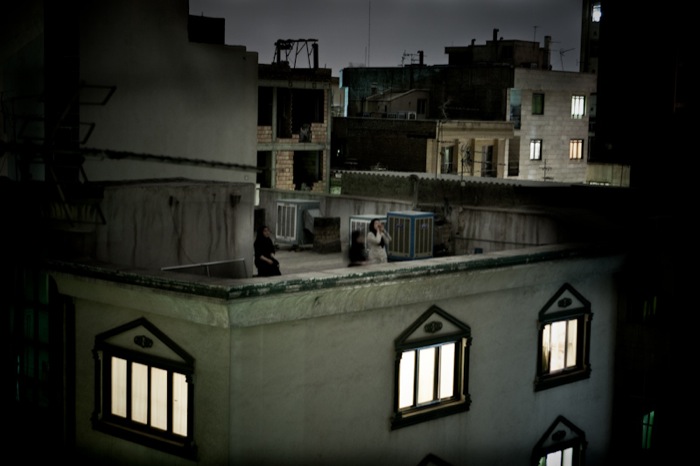
© Pietro Masturzo
Pietro Masturzo's award-winning World Press Photo of the Year for 2009 depicts women shouting, or perhaps ululating, on a rooftop in Tehran at twilight on June 24, 2009. During the weeks of protest that erupted after the contested presidential elections, women in Tehran could be heard ululating and calling out across rooftops at night. If these acts of vocal protest were intended to mobilize protesters against the increasingly violent responses of the Iranian state, Masturzo's photograph evocatively captures the ways in which gendered forms of protest are also about mourning and loss.
Most explicitly, this photograph challenges Western fantasies about Muslim women's passivity and submissiveness under religious patriarchy. In the center of the composition, a woman raises her arms as she calls out across an urban landscape empty of other people. The figure next to her is a blur of movement that suggests participation in this act of protest. The two figures' movements contrast with the sharp and distinct angles of the buildings that stretch across the composition to fill the space. Another contrast between movement and stability occurs in the interaction between the two moving figures at the roof ledge and the seated woman behind them who witnesses this political act. Both she and the calling woman wear head scarves that typically function for Western viewers as signifiers of both Islamic faith and misogynistic oppression. The representation of political subjectivity through the three figures' varied actions challenges such assumptions as it gestures towards the rich social and political context of Iranian women's activism.
Going beyond a celebratory representation of Muslim women's political subjectivity, Masturzo captures the gendered experiences of mourning that haunt political protest. Narratively, the figures' movements create a sense of immediacy as well as an aural affect, as if we could almost hear the woman's call. In tension with this temporal immediacy are the lighted rooms below and behind, rooms whose ghost-like interiors animate the scene with their emptiness. No responding figures appear in the image to offer a visual promise of collectivity. Moreover, the tonal range from the deep blacks to the bright interiors contributes to the ominous mood of the photograph. Hauntingly, this urban landscape, with its brightly lit windows and dark hidden spaces, combines with the women's actions to evoke both the urgent promise of political action and the hovering fear of violence and loss.
Wendy Kozol, Professor of Comparative American Studies
Oberlin College, Oberlin, Ohio USA
March 10, 2010

